It has been over a year since I’ve written on this blog. What can I say? I’ve been busy. I’m still writing and editing my novel, Open Cut (part-time), and I’m still teaching secondary school (full-time). Teaching and writing are both very draining and, I’ve always thought, quite different jobs. Both require a lot of planning, preparation and time. I’ve tried hard in the past to keep these two activities separate, struggling to do each well. But I’m beginning to realise that there are some valuable links.
Last term I went to some professional development sessions on Dimensions of Learning run by the Australian National Schools Network. Put simply, this is a framework that enables teachers to give students strategies and processes with which to organise their thoughts about the subject they are being taught. It provides a common language for both teachers and students. It reminded me of what I already knew about teaching. All teachers have tricks up their sleeves – graphic organisers, PMI charts, mind maps – with which they encourage creativity and higher order thinking amongst their students.
The Dimensions of Learning made me more cognisant of why I use certain methods at certain times in certain classes. It was interesting to hear teachers discuss what they do in the classroom during the sessions. The classroom is very much like a writer’s room: private, no-one is watching. Of course, there are the thirty students, but you’re isolated from your colleagues. My students’ results show the work I have done, and this can make me horrified and proud in equal measures. Teachers rarely talk about the process of teaching. They might share resources, discuss what they’ve taught, without explaining how they’ve taught it. As if this is explicit, when, of course, it isn’t. I’ve spent many seminars listening to other writers talk about their craft, but not teachers.
Of course, teaching has none of the glamour of writing. People want to hear writers impart their wisdom, and will pay good money to do so. I’ve seen writers barraged with questions from those wanting desperately to know how they do it: how do they think of ideas, how do they plot, how do they find time? No-one really cares about what teachers do, not the parents, not the media, and certainly not the school administrators. They’re only interested in results, in the data that the My School website makes public, and how many OPs 1-15 the school produces. Yet teaching is as creative as writing. We all teach from the same syllabus and curriculum frameworks, but how we teach is different.
Before I began my masters I went to see a writer speak who had recently won a Premier’s Award. Her novel was part of her Masters and she was in the process of writing her exegesis, and was lamenting this fact. ‘I just wrote it,’ she said. ‘Why do I have to explain it?’ Probably without realising it, she was perpetuating the Romantic myth that writers are imbued with special gifts, and that once they sit down at the desk to write, something magical happens, and the words simply spring forth. It just happened. Like my students’ results, the work stood for itself.
I also have to write an exegesis about my writing practice. I’m doing a ‘practice-led’ research masters, which means that my writing practice (the how, what, when, why, and where I write) informs my research. One of my QUT lecturers explained that you have to know your own work as well as you know the work of others. The exegesis involves explaining how you came up with the premise for the novel, and what is it about your own background and beliefs that allowed the idea to germinate. I should be able to explain how the ideas developed and why I wanted to write this book.
I’m teaching Modern History for the first time in seven years. As part of their assessment the students must complete a research journal where they write about the resources they’ve chosen to include, and where they reflect on what they’ve learnt throughout the process of completing the assignment. This is very similar to writing an exegesis. One teacher made the comment that the journal consisted of ‘all the stuff that used to be scattered all over the floor.’ And that’s true; it used to be what you threw out, all the scrappy notes that you didn’t want anyone else to see because it was too embarrassing. Now these thoughts are used to document and reflect upon the writing and research process, to create a greater insight into how ideas germinate into a finished product. Exposing the mess and clutter helps to debunk the myth that writing happens magically.
Much of what I teach is spur of the moment, not written down, instinctive, but then is lost. I can’t clearly articulate to another teacher how I had taught a particular skill, or explain clearly what I actually did in the classroom. It cannot be passed on, and it’s not written down for future use. Teachers are very busy people and often don’t have the time to plan their lessons properly before they walk into the classroom. If a lesson goes well it’s a happy accident.
At different writers seminars I’ve heard the sage advice ‘just write’. I’ve found this about as practical as Nike’s ‘Just Do It’ slogan. In the novel I just finished reading, The Angel’s Game, by Carlos Ruiz Zafon, the protagonist tells a young girl, who has aspirations about being a writer, ‘Inspiration comes when you stick your elbows on the table, your bottom on the chair and you start sweating. Choose a theme, an idea, and squeeze your brain until it hurts. That’s called inspiration.’
When I was young, my mother taught me how to knit. She was quite good at it, but I never progressed from knitting scarves. In fact, I never actually finished a scarf. I would just knit and knit and knit until I got sick of it and then I’d pull it all out. I never learnt how to shape the wool into a piece of useable clothing. I didn’t mind knitting; I just never made anything worthwhile.
The early stages of writing my novel had been similar. I would write passages that fit together more by accident than design. I was happy with some of what I wrote, but when the novel reached around 20 000 words it became unwieldy. I needed to work all the chapters I had written into a story with a clear beginning, middle and end, and I didn’t know how.
When most people begin to write a novel they stop after the first few chapters, just as I stopped knitting. It became too hard and achieved nothing. Though my two metre long scarves gave me practice knitting, they had no form. I was simply knitting the stitches, just as I had been simply writing words that did not hang together coherently.
When I did the Year of the Novel and an editing course with Kim Wilkins at the Queensland Writers’ Centre, she gave practical tips on how to transform the words on the page into a full blown work. I remember the light bulb moment when she said that chapters are like a series of related scenes in a film. My honours degree was in film so this analogy made sense to me. It helped me understand how paragraphs, scenes, and chapters link, how they should move the story forward, and if they don’t, they should be cut.
I had been doing this unknowingly, but when I became conscious that this was what I needed to do, it became easier. It takes time to plan and plot the story and it is harder than just writing freely. I’ve read work that is beautifully written, but that has not plot, no shape, and no story. I still struggle sometimes, but having a plan has made writing so much easier. I used to sit at my desk and begin to write without having clearly thought about how the scene would begin, where it would be set, and how it would fit into the overall work. But taking the time to plan frees up time, both in the classroom, and at the writer’s desk, though it takes discipline and determination.
Kim Wilkins is an extraordinary writer and teacher. She is generous with her knowledge and shares it willingly with others who wish to write. She has written twenty-one novels. Her most recent work, Wildflower Hill, written under her pseudonym, Kimberley Freeman, has made its debut in America and Canada by becoming the Target Book Club pick, which gives credence to the adage you get back what you give out.
Many writers hesitate about talking about the writing process: the isolation; the draining, sometimes soul destroying, pain of it. Writing is messy and ugly, and frankly, so is teaching. But Kim isn’t afraid to put her methods out there, as she says, ‘I am bold enough to do it’. Kim’s strategies make writing easier, but at some point all writers must work on their own. Teaching using the Dimensions of Learning is similar, I can give the students strategies to categorise their notes and ideas, but they must be prepared to put in effort on their own.
Not everyone is able to write a best seller or a Pulitzer Prize winner, and not every student will obtain an OP1, no matter how many different strategies the teacher uses. Dimensions of Learning is not a magic bullet, it is a tool, something to organise your thoughts. One strategy may work one lesson, and not the next; just as one writing technique may work one week, and then not the next. I see my students balk at writing all the time. They hesitate before writing an opening sentence, wanting to get it perfect. One of students told me recently, ‘I don’t write anything till I’ve got it right in my head.’ Consequently, he always leaves his drafts to the very last minute, having spent the previous five weeks locked in a debilitating spiral of procrastination, guilt and self-doubt.
E.M. Forster said, ‘How can I know what I think till I see what I say.’ Planning a novel, an essay, or any piece of writing, may start with something as simple as a bubble map of ideas. But these ideas must be taken from your head and put down on paper, so they can develop and coalesce into sentences and paragraphs. Writing courses can equip you with the tools you need to shape your writing into a coherent work, and the support you get from other writers is priceless.
Robert McKee, author of Story, tells the fable of the millipede. ‘When asked how it walked so easily with one thousand legs the creature wondered, “Yes, how do I do that?” As she turned to look back, she fell off the bough of the tree. Then with determination and effort she thought about the moves she made that allowed her to walk so skilfully, and began to walk with even more grace and fluidity.’ Knowing explicitly what you are doing, allows you to do it better. It allows you to be aware, to be conscious, and to be present. Sometimes you need to be reminded of what you know. The awareness of what I’m doing will surely make me a better writer and teacher.





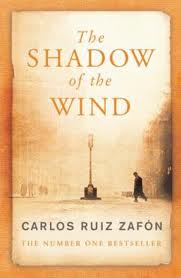
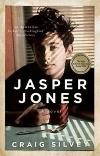








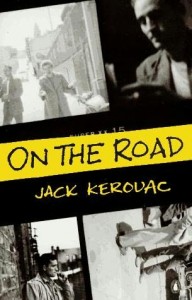







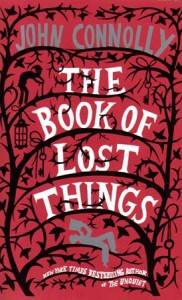




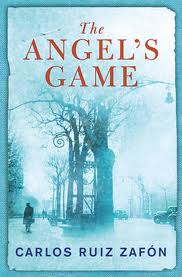








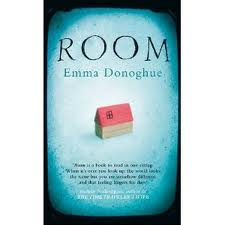




















Nov 07, 2011 @ 22:06:24
Hi Leanne,
I’m glad to hear that you are still writing away and working on ‘Open Cut’. Your post is really interesting in terms of how different writers work. I still find it very difficult to ‘plan’ despite what we learned on that course. In writing my second book, I have started by writing a rough synopsis so I know some major plot points, then I use the ‘just write’ philosophy and write a minimum of 500 words a day. We all work differently. Look forward to hearing that ‘Open Cut’ is finished!
Dawn
Nov 09, 2011 @ 06:03:59
Hi Dawn
It’s fantastic that you’ve begun your second novel, and that you’ve got an agent for your first book. I can’t wait to read it. It is always interesting to hear how different writers undergo the process. I find planning difficult too, but I found the ending of my novel was not working because the other sections were not well structured or organised. Basically I think I was forcing an ending when I hadn’t actually finished writing the middle. I went to a lecture last night given by Anita Heiss, where she explained how she goes about researching and writing. It was brilliant, and I left very inspired. I’m going to blog about it next!
Great to hear from you 🙂